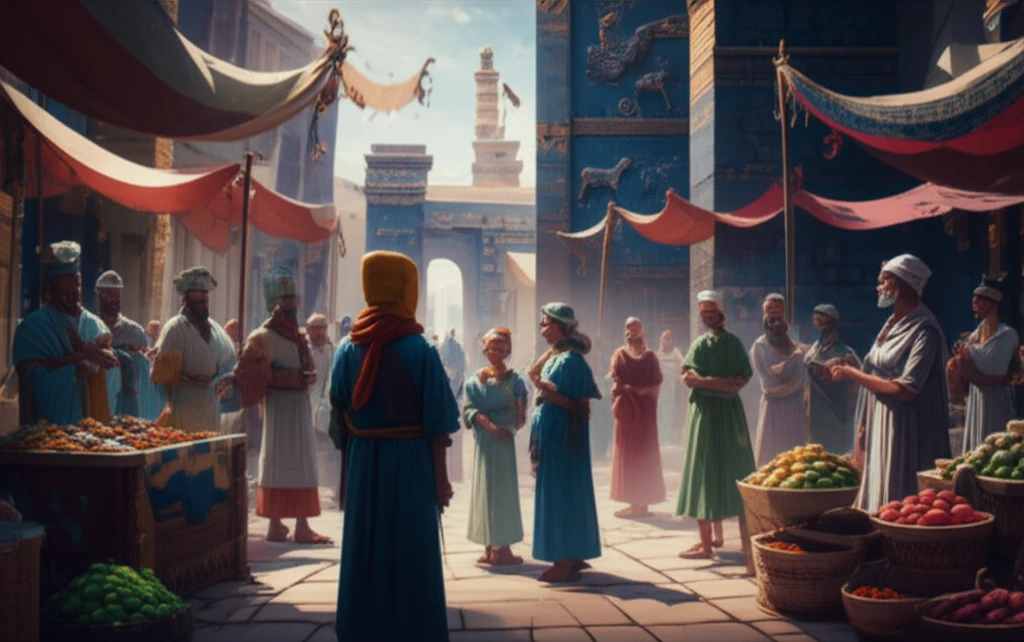
Ancient Babylon's Melting Pot: Uncovering the Stories of Foreigners in Nebuchadnezzar's Era
"Explore how economic opportunities, war, and political maneuvering drew diverse populations to Babylon, shaping its vibrant culture during Nebuchadnezzar II's reign."
Imagine walking through the ancient city of Babylon during the reign of Nebuchadnezzar II (605-562 B.C.E.). A bustling metropolis, it was home to not only native Babylonians but also a significant number of foreigners from various lands. These individuals, hailing from the Levant, Egypt, Anatolia, and the Jazira, added unique flavors to the city's cultural and economic landscape.
Historical texts reveal that these foreigners weren't a homogenous group. They included prisoners of war, diplomatic envoys, skilled laborers, and merchants, each with their own reasons for being in Babylon. Their presence reflects the city’s central role in regional power dynamics, trade, and warfare.
This article explores the stories of these foreigners, drawing on historical records to paint a picture of their lives, roles, and integration (or lack thereof) within Babylonian society. By examining their experiences, we can gain a deeper understanding of Babylon's complex social structure and its interactions with the wider ancient world.
Who Were These Foreigners in Babylon?

The reign of Nebuchadnezzar II was marked by extensive military campaigns, which inevitably led to an influx of prisoners of war. These captives, primarily from regions west and northwest of Babylon, formed a significant portion of the foreign population. While their lives were undoubtedly difficult, their labor and skills contributed to Babylon's infrastructure and economy.
- Prisoners of War: Captured during Nebuchadnezzar's military campaigns, these individuals were often employed in construction and other manual labor projects.
- Diplomatic Envoys: Representatives from neighboring kingdoms, fostering political and cultural exchange.
- Skilled Laborers: Craftsmen, artisans, and scribes from various regions who brought valuable skills and expertise to Babylon.
- Merchants and Traders: Individuals involved in commerce, facilitating the exchange of goods and ideas.
- Religious Figures: Priests and other religious personnel who maintained cultural and spiritual connections to their homelands.
The Lasting Impact of Foreigners on Babylonian Society
The presence of foreigners in Babylon had a profound and lasting impact on its society. These individuals not only contributed to the city's economic and infrastructural development but also enriched its culture through the introduction of new ideas, customs, and technologies. While their integration into Babylonian society was not always seamless, their presence undeniably shaped the city's identity as a cosmopolitan center in the ancient world. By understanding their stories, we gain valuable insights into the complexities of ancient migration, cultural exchange, and the formation of urban societies.
